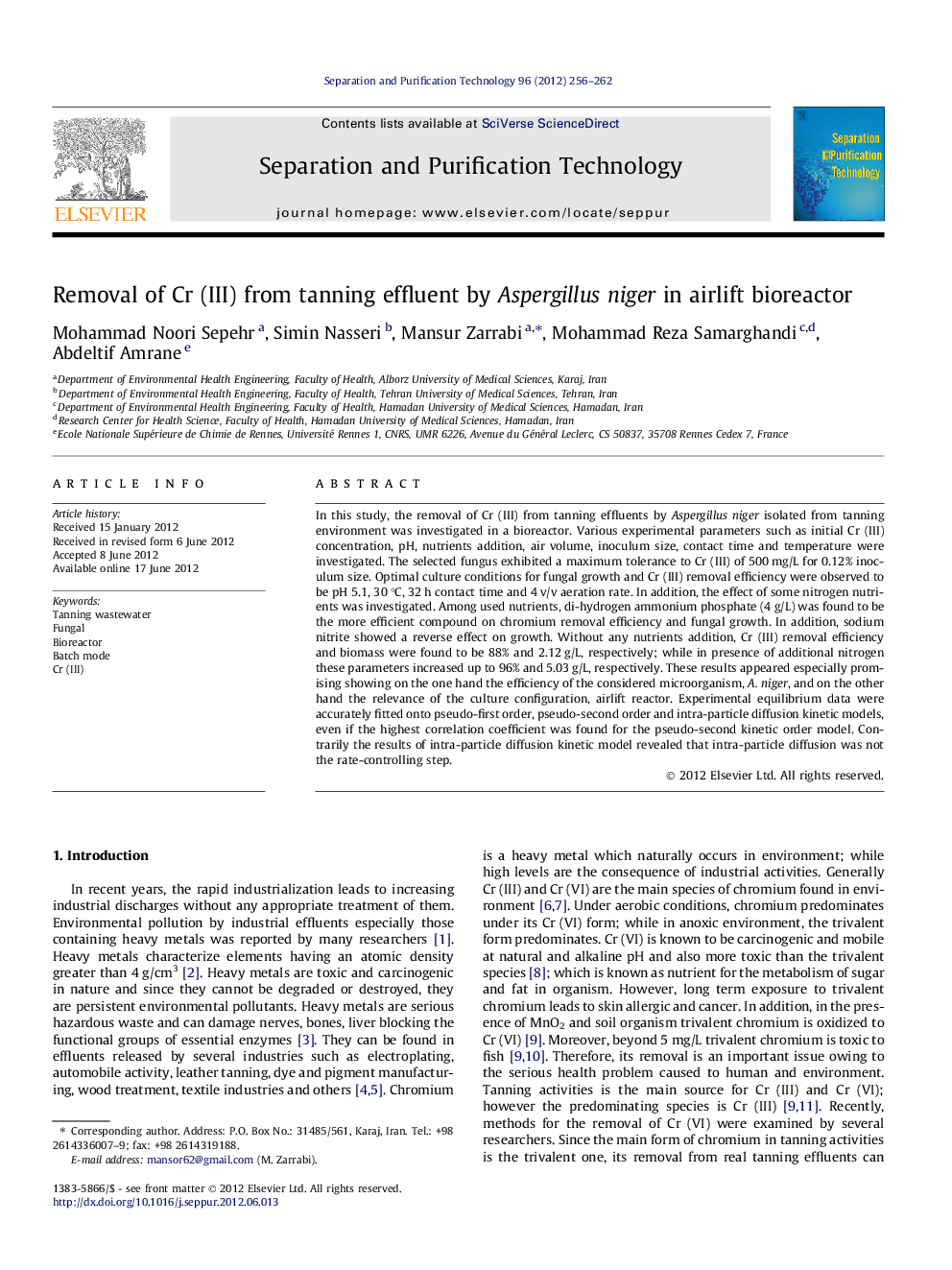| Article ID | Journal | Published Year | Pages | File Type |
|---|---|---|---|---|
| 642137 | Separation and Purification Technology | 2012 | 7 Pages |
In this study, the removal of Cr (III) from tanning effluents by Aspergillus niger isolated from tanning environment was investigated in a bioreactor. Various experimental parameters such as initial Cr (III) concentration, pH, nutrients addition, air volume, inoculum size, contact time and temperature were investigated. The selected fungus exhibited a maximum tolerance to Cr (III) of 500 mg/L for 0.12% inoculum size. Optimal culture conditions for fungal growth and Cr (III) removal efficiency were observed to be pH 5.1, 30 °C, 32 h contact time and 4 v/v aeration rate. In addition, the effect of some nitrogen nutrients was investigated. Among used nutrients, di-hydrogen ammonium phosphate (4 g/L) was found to be the more efficient compound on chromium removal efficiency and fungal growth. In addition, sodium nitrite showed a reverse effect on growth. Without any nutrients addition, Cr (III) removal efficiency and biomass were found to be 88% and 2.12 g/L, respectively; while in presence of additional nitrogen these parameters increased up to 96% and 5.03 g/L, respectively. These results appeared especially promising showing on the one hand the efficiency of the considered microorganism, A. niger, and on the other hand the relevance of the culture configuration, airlift reactor. Experimental equilibrium data were accurately fitted onto pseudo-first order, pseudo-second order and intra-particle diffusion kinetic models, even if the highest correlation coefficient was found for the pseudo-second kinetic order model. Contrarily the results of intra-particle diffusion kinetic model revealed that intra-particle diffusion was not the rate-controlling step.
► Removal of Cr (III) by A. Niger in airlift bioreactor was investigated. ► The selected fungus exhibited a maximum tolerance to Cr (III) of 500 mg/L. ► Airlift reactor exhibits higher performance for treatment of tanning wastewater. ► Removal efficiency and fungal mass were found to be 96% and 5.03 g/L, respectively.
